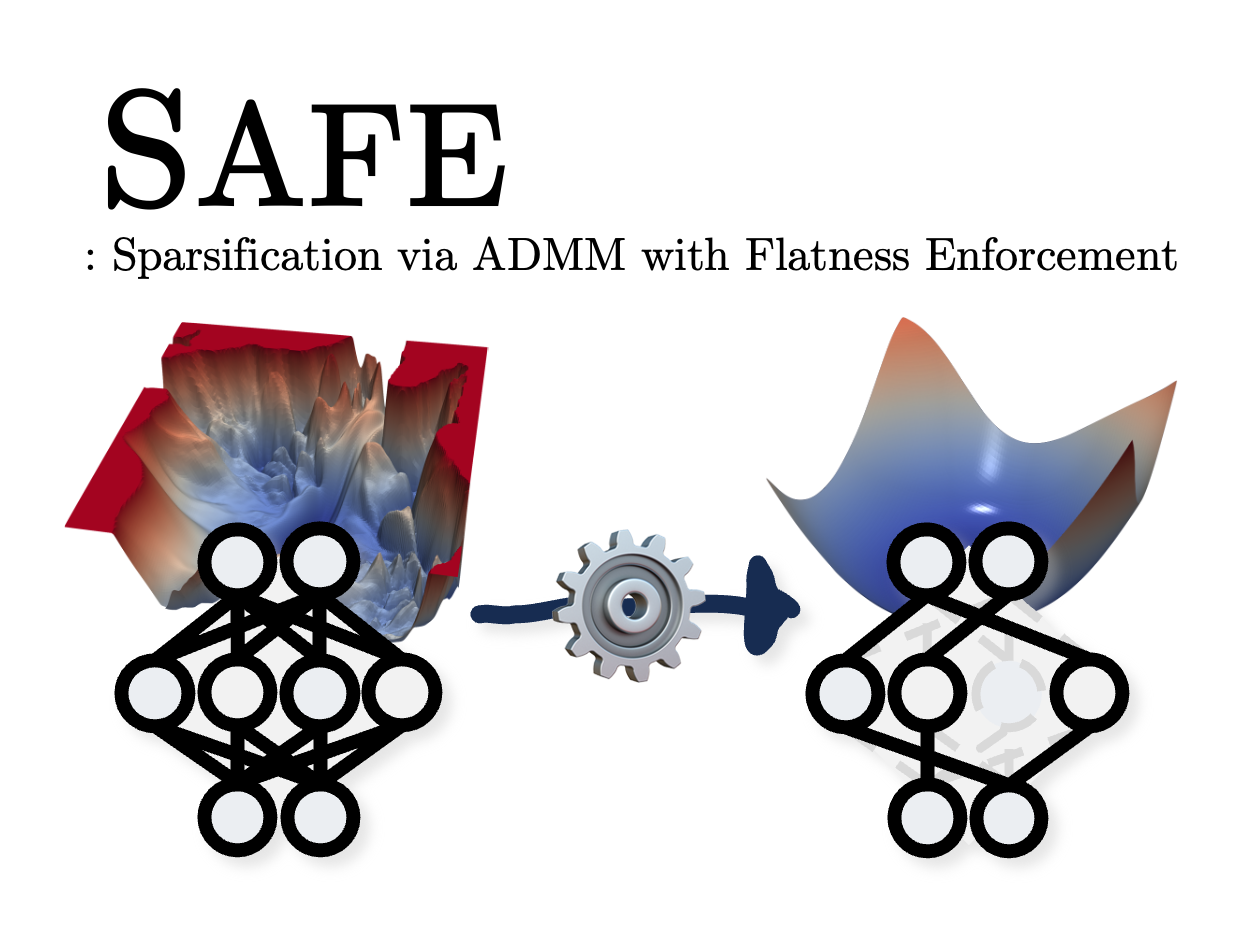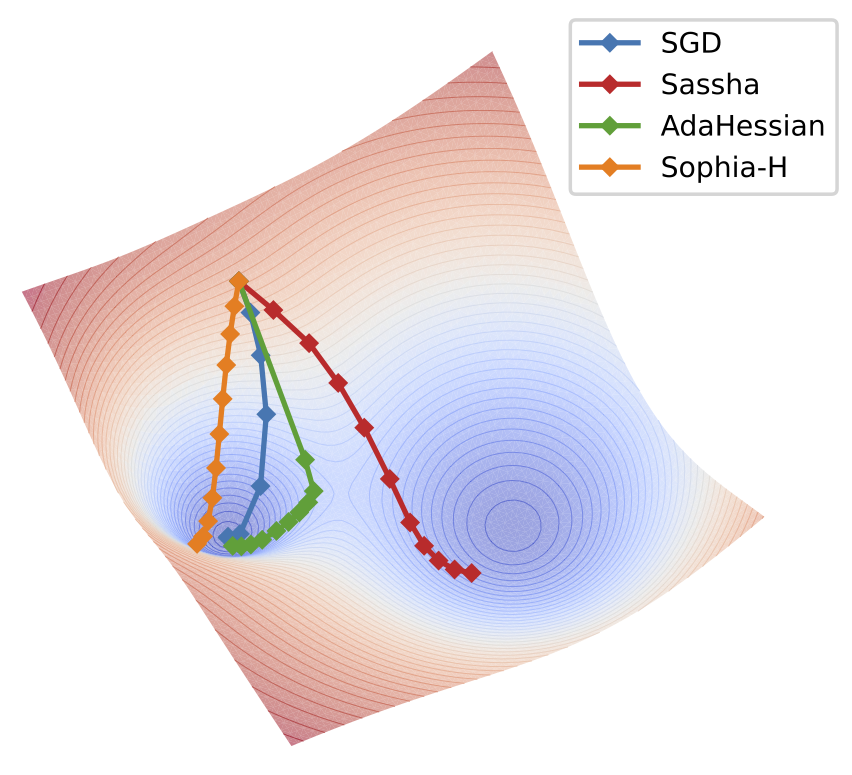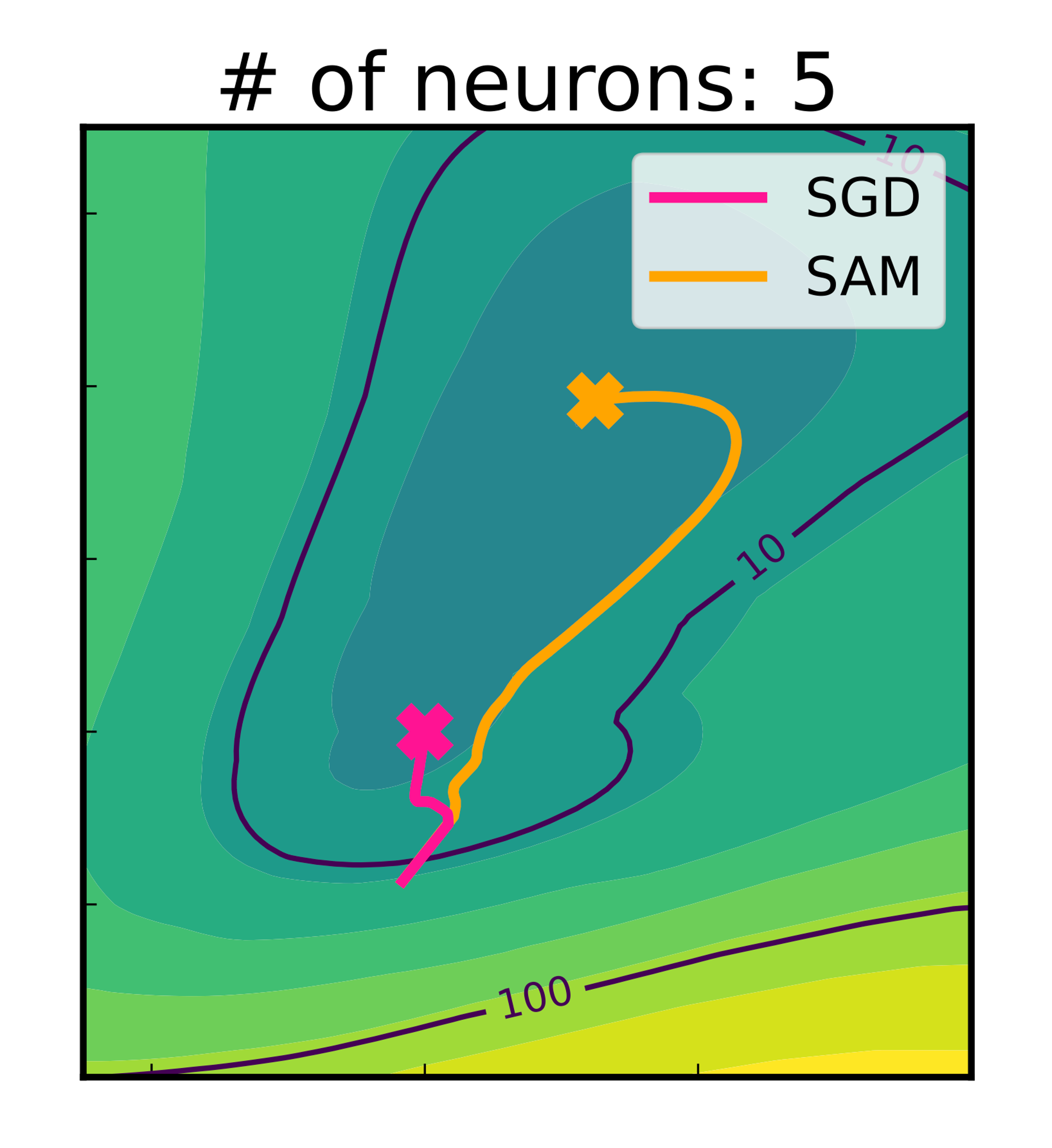publications
publications by categories in reversed chronological order. generated by jekyll-scholar.
2025
- PreprintThe Unseen Frontier: Pushing the Limits of LLM Sparsity with Surrogate-Free ADMMKwanhee Lee, Hyeondo Jang, Dongyeop Lee, Dan Alistarh, and Namhoon Leearxiv, Oct 2025
Neural network pruning is a promising technique to mitigate the excessive computational and memory requirements of large language models (LLMs). Despite its promise, however, progress in this area has diminished, as conventional methods are seemingly unable to surpass moderate sparsity levels (50-60%) without severely degrading model accuracy. This work breaks through the current impasse, presenting a principled and effective method called Elsa, which achieves extreme sparsity levels of up to 90% while retaining high model fidelity. This is done by identifying several limitations in current practice, all of which can be traced back to their reliance on a surrogate objective formulation. Elsa tackles this issue directly and effectively via standard and well-established constrained optimization techniques based on ADMM. Our extensive experiments across a wide range of models and scales show that Elsa achieves substantial improvements over existing methods; e.g., it achieves 7.8× less perplexity than the best existing method on LLaMA-2-7B at 90% sparsity. Furthermore, we present Elsa-L, a quantized variant that scales to extremely large models (27B), and establish its theoretical convergence guarantees. These results highlight meaningful progress in advancing the frontier of LLM sparsity, while promising that significant opportunities for further advancement may remain in directions that have so far attracted limited exploration.
-
 SAFE: Finding Sparse and Flat Minima to Improve PruningDongyeop Lee, Kwanhee Lee, Jinseok Chung, and Namhoon LeeICML 2025 (spotlight), Jul 2025
SAFE: Finding Sparse and Flat Minima to Improve PruningDongyeop Lee, Kwanhee Lee, Jinseok Chung, and Namhoon LeeICML 2025 (spotlight), Jul 2025Sparsifying neural networks often suffers from seemingly inevitable performance degradation, and it remains challenging to restore the original performance despite much recent progress. Motivated by recent studies in robust optimization, we aim to tackle this problem by finding subnetworks that are both sparse and flat at the same time. Specifically, we formulate pruning as a sparsity-constrained optimization problem where flatness is encouraged as an objective. We solve it explicitly via an augmented Lagrange dual approach and extend it further by proposing a generalized projection operation, resulting in novel pruning methods called SAFE and its extension, SAFE+. Extensive evaluations on standard image classification and language modeling tasks reveal that SAFE consistently yields sparse networks with improved generalization performance, which compares competitively to well-established baselines. In addition, SAFE demonstrates resilience to noisy data, making it well-suited for real-world conditions.
-
 SASSHA: Sharpness-aware Adaptive Second-order Optimization with Stable Hessian ApproximationDahun Shin*, Dongyeop Lee*, Jinseok Chung, and Namhoon LeeICML 2025 (CKAIA 2024), Jul 2025
SASSHA: Sharpness-aware Adaptive Second-order Optimization with Stable Hessian ApproximationDahun Shin*, Dongyeop Lee*, Jinseok Chung, and Namhoon LeeICML 2025 (CKAIA 2024), Jul 2025Approximate second-order optimization methods often exhibit poorer generalization compared to first-order approaches. In this work, we look into this issue through the lens of the loss landscape and find that existing second-order methods tend to converge to sharper minima compared to SGD. In response, we propose Sassha, a novel second-order method designed to enhance generalization by explicitly reducing sharpness of the solution, while stabilizing the computation of approximate Hessians along the optimization trajectory. In fact, this sharpness minimization scheme is crafted also to accommodate lazy Hessian updates, so as to secure efficiency besides flatness. To validate its effectiveness, we conduct a wide range of standard deep learning experiments where Sassha demonstrates its outstanding generalization performance that is comparable to, and mostly better than, other methods. We provide a comprehensive set of analyses including convergence, robustness, stability, efficiency, and cost.
-
 Critical Influence of Overparameterization on Sharpness-aware MinimizationSungbin Shin*, Dongyeop Lee*, Maksym Andriushchenko, and Namhoon LeeUAI 2025 (ICML 2023 HiLD Workshop, Best paper award🏆@ JKAIA 2023), Jul 2025
Critical Influence of Overparameterization on Sharpness-aware MinimizationSungbin Shin*, Dongyeop Lee*, Maksym Andriushchenko, and Namhoon LeeUAI 2025 (ICML 2023 HiLD Workshop, Best paper award🏆@ JKAIA 2023), Jul 2025Training an overparameterized neural network can yield minimizers of different generalization capabilities despite the same level of training loss. Meanwhile, with evidence that suggests a strong correlation between the sharpness of minima and their generalization errors, increasing efforts have been made to develop optimization methods to explicitly find flat minima as more generalizable solutions. Despite its contemporary relevance to overparameterization, however, this sharpness-aware minimization (SAM) strategy has not been studied much yet as to exactly how it is affected by overparameterization. Hence, in this work, we analyze SAM under overparameterization of varying degrees and present both empirical and theoretical results that indicate a critical influence of overparameterization on SAM. At first, we conduct extensive numerical experiments across vision, language, graph, and reinforcement learning domains and show that SAM consistently improves with overparameterization. Next, we attribute this phenomenon to the interplay between the enlarged solution space and increased implicit bias from overparameterization. Further, we prove multiple theoretical benefits of overparameterization for SAM to attain (i) minima with more uniform Hessian moments compared to SGD, (ii) much faster convergence at a linear rate, and (iii) lower test error for two-layer networks. Last but not least, we discover that the effect of overparameterization is more significantly pronounced in practical settings of label noise and sparsity, and yet, sufficient regularization is necessary.